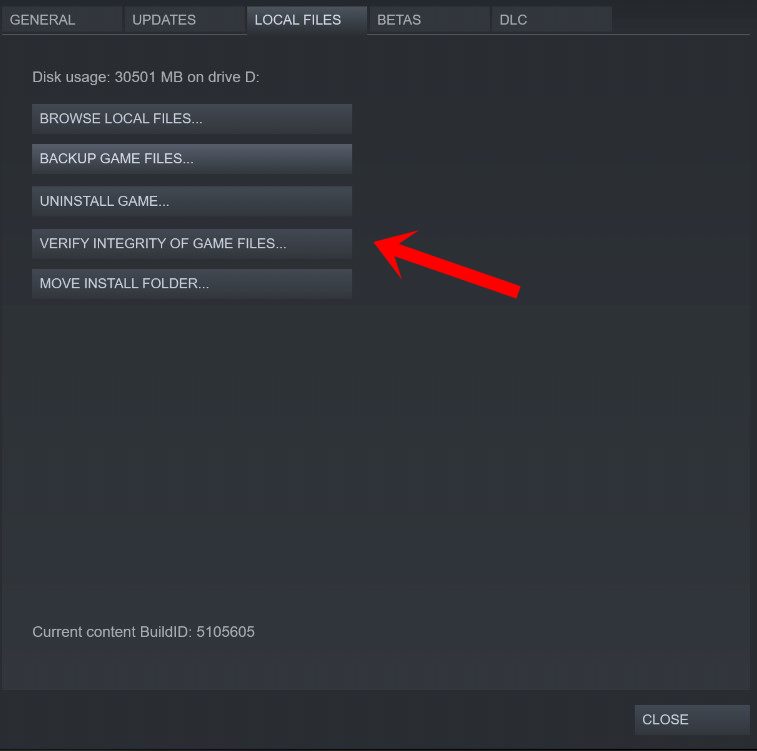Ubisoft did launch Tom Clancy’s Rainbow Six Siege back in 2015 as a tactical hero shooter online multiplayer video game, which is still one of the best-in-class FPS titles in the market. Ubisoft is known for its better game support and development, but multiple players have had a few common issues for a while. Though the title has received millions of positive reviews on Steam, it seems that some unfortunate Rainbow Six Siege players are still facing the High Ping and Packet Loss issue due to several possible reasons, which are frustrating.
The high ping delay or the packet data loss in online multiplayer video games affects the gameplay and prevents plenty of players from getting into the game. It may happen due to an internet connectivity issue or a server-related fault, which is quite common for online titles. Loss of packet data causes a reduction in the connection quality and occurs signal loss to the servers. That’s why the game servers don’t respond appropriately.
Also Read
Fix: Rainbow Six Siege Cross Progression Not Working
Rainbow Six Siege No Recoil Script For Logitech and Razer
Rainbow Six Siege Player Count Stats in 2023
Rainbow Six Siege Best Attackers 2023
Fix: Rainbow Six Siege Invite Not Working 2023
Fix: Rainbow Six Siege Multiplayer Not Working Issue
Fix: Can’t Connect to Rainbow Six Siege Servers PC, Xbox, PS4, PS5
Fix: Rainbow Six Siege Banned or Suspended for No Reason
Fix: Rainbow Six Siege Servers Unreachable Error

Page Contents
- How to Fix Rainbow Six Siege High Ping and Packet Loss
- 1. Check the Rainbow Six Siege Server Status
- 2. Check the Internet Connection
- 3. Power Cycle the Wi-Fi Router
- 4. Try Using Another Internet Network
- 5. Update Rainbow Six Siege
- 6. Repair Rainbow Six Siege Game Files
- 7. Enable Console Command for Rainbow Six Siege
- 8. Update Network Drivers
- 9. Disable IPv6 Protocol
- 10. Disable VPN or Proxy Servers
- 11. Try Using a Google Public DNS
How to Fix Rainbow Six Siege High Ping and Packet Loss
Apart from the game server downtime and internet connection issue, the chances are also high that somehow any specific program is consuming a lot of bandwidth in the background. At the same time, issues with the Wi-Fi router, selected game server region, issues with the outdated game version, corrupted or missing game files, etc may trigger the high ping delay and packet loss quite easily. In this scenario, even your powerful hardware won’t come in handy.
1. Check the Rainbow Six Siege Server Status
The chances are high that there is nothing troubling you more than the actual game servers because of the server downtime or maintenance at that moment. It’s always better to manually check the online game server status to ensure what’s going up. You should head over to the Rainbow Six Siege Twitter handle to get all reports and updates in real-time. Additionally, you can get to know more outage reports on the third-party Down Detector Rainbow Six Siege website.
If in case, there is a server downtime or outage occurred then make sure to wait for a couple of hours and then check for the issue again. Let the developers fix it out technically. Luckily, if there is no server operational issue then you can head over to the next method.
2. Check the Internet Connection
Ensure to check out if the internet connection at your end is working fine or not. A poor or unstable internet network can eventually trigger the latency issue whatsoever. If your internet data speed isn’t stable or fast enough then we’ll recommend you to contact your ISP (Internet Service Provider) for further assistance. If your IP address has some issue then ask the support to change your IP and try again.
3. Power Cycle the Wi-Fi Router
Sometimes a temporary networking glitch on the Wi-Fi router may also cause a high ping delay and packet data loss issues a lot. It’s better to perform a power cycle method on the Wi-Fi router by following the steps below to refresh the networking connectivity.
- Just power off the router completely > Unplug the power adapter from the router.
- Wait for around a minute or so and then plug back the power adapter in.
- Power on the router once again and connect to the Wi-Fi network to check for the issue.
4. Try Using Another Internet Network
It’s also suggested to use a different internet network such as mobile data or any other ethernet/Wi-Fi network instead of using the same problematic network. In that case, you might be able to understand whether the network is causing the issue or not. If you don’t have access to it, make sure to use a mobile hotspot to at least cross-check the high ping or latency issue.
5. Update Rainbow Six Siege
You should check for the Rainbow Six Siege game update because an outdated game version can trouble you a lot. So, if you haven’t updated your game for a while, then follow the steps below to check for updates and install the latest update. To do so:
- Open the Steam client > Go to Library > Click on Rainbow Six Siege from the left pane.
- It’ll automatically search for the available update. If there is an update available, make sure to click on Update.
- Wait some time to install the update > Once done, close the Steam client.
- Finally, reboot your PC to apply changes and launch the game again.
6. Repair Rainbow Six Siege Game Files
Sometimes corrupted or missing game files that are installed on your PC can eventually occur several issues with the game running properly. You should verify the installed game files and repair them by using the game launcher automatically. To do so:
- Launch the Steam client > Click on Library.
- Right-click on Rainbow Six Siege from the list of installed games.
- Now, click on Properties > Go to Local Files.

- Click on Verify Integrity of Game Files.
- You’ll have to wait for the process until it gets completed.
- Once done, restart your computer.
7. Enable Console Command for Rainbow Six Siege
Another thing you can do is enable the console command for the Rainbow Six Siege game on the Steam client to reduce packet data loss. The more packet data loss you experience, the more game will lag and encounter server connectivity issues.
- Open the Steam client > Go to Library.
- Now, locate and right-click on Rainbow Six Siege from the list of installed games.
- Click on Properties > From the General tab, press the Set Launch Options button.
- Then make sure to type the following command line in the field:
-console
- Next, launch Rainbow Six Siege on Steam > Go to Steam Settings and open Hotkeys.
- Find out the player’s action ‘Command‘ > Select it to assign a keyboard key to display the console.
- Type the following command at the console: [This example is set to Madrid, Spain region]
sdr SDRClient_ForceRelayCluster mad
- Check the region command list below and enter the region code according to your preference.
8. Update Network Drivers
You should always update your networking drivers on the PC manually to ensure there is no connectivity issue happening due to the corrupted or missing network drivers. To do this:
- Right-click on the Start Menu to open up the Quick Access Menu.
- Click on Device Manager from the list.
- Now, double-click on the Network adapters category to expand the list.
- Next, right-click on the specific network adapter.
- Select Update driver > Choose Search automatically for drivers.
- If there is an update available, it’ll automatically download and install the latest version.
- Once done, make sure to reboot your computer to change the effects.
9. Disable IPv6 Protocol
- Press the Windows + R shortcut keys on the keyboard to open the Run dialog box.
- Now, type control and hit Enter to open Control Panel.
- Click on Network and Internet > Select Network and Sharing Center.
- Go to your Connections to select Ethernet, Wi-Fi, or others depending on what you’re using.
- Next, click on Properties > Uncheck the Internet Protocol Version 6 (TCP/IPv6) to disable it on the PC.
If in case, you’re using the IPv6 protocol on the Wi-Fi router then head over to the router’s dashboard and turn it off.
10. Disable VPN or Proxy Servers
Most PC gamers do use VPN services or proxy servers on the system to access geo-restricted content or access the game servers. But the VPN services may cause multiple issues with the game server connectivity or increase latency that eventually triggers lags, stutters, frame drops, etc. So, you should disable the VPN or proxy server and check for the issue again.
- Press the Windows + I keys to open Settings.
- Click on Network & Internet from the left pane.
- Go to Proxy > Make sure to Turn OFF Proxy Server Settings.
- You should also turn off the Automatically detect settings toggle.
If in case, you’re using the VPN service or proxy server on the router then head over to the router’s admin panel and turn it off temporarily. It should help you to reduce the latency while connecting to the game server.
11. Try Using a Google Public DNS
If none of the above methods did work for you then you should use a public DNS address on the PC manually to ensure there are no issues with the DNS server connectivity. Sometimes your ISP has some issues with the DNS address that may not work properly in different regions. Then make sure to use the Google Public DNS address by following the steps below to fix the game server connectivity.
- Press the Windows + R shortcut keys on the keyboard to open the Run dialog box.
- Now, type control and hit Enter to open Control Panel.
- Click on Network and Internet > Select Network and Sharing Center.
- Go to your Connections to select Ethernet, Wi-Fi, or others depending on what you’re using.
- Next, click on Properties > Double-click on Internet Protocol Version 4 (TCP/IPv4) to open a new window.
- Click on Use the following DNS server addresses and input 8.8.8.8 as a Preferred DNS server.
- While you’ll have to enter 8.8.4.4 as the Alternate DNS server > Click on the checkbox of Validate settings upon exit.
- Click on OK to confirm the changes > Launch the Rainbow Six Siege game to check for the issue.
That’s it, guys. We assume this guide was helpful to you. For further queries, you can comment below.
